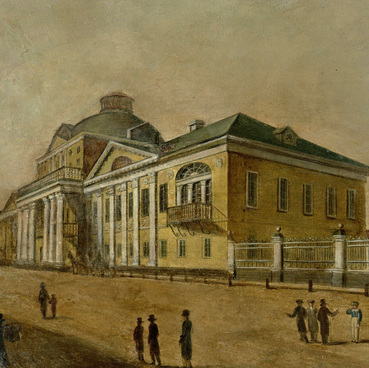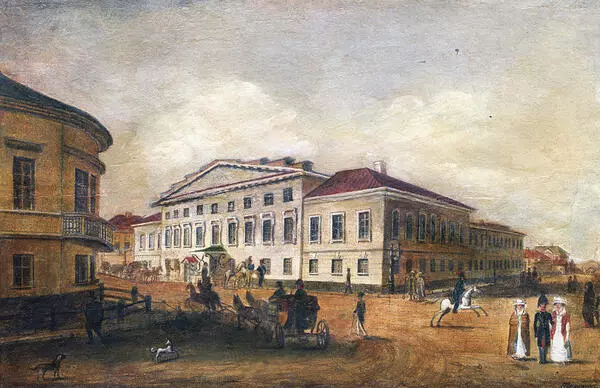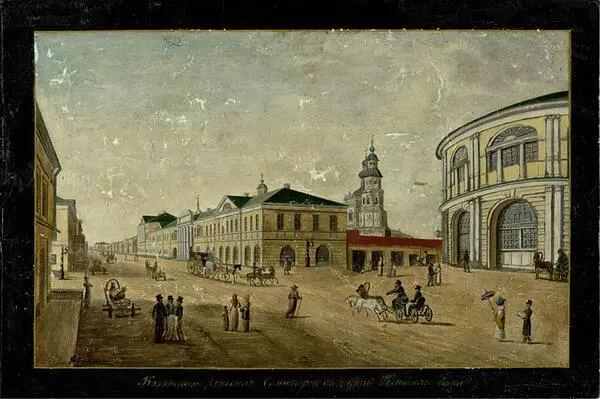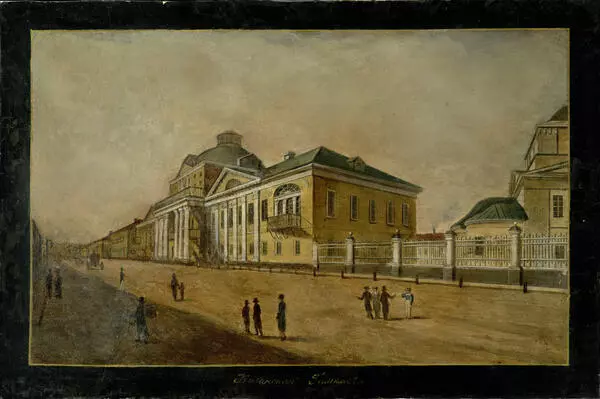Turin has become a part of the art history of the first half of the 19th century thanks to his numerous works in the urban landscape genre. For many years Turin studied the peculiarities of architecture and everyday life of Kazan. The astonishing observation skills and interest in urban architecture allowed the artist to create the most complete image of the city in which Yevgeny Boratynskiy lived from time to time with his family.
Vasily Turin was at the origin of artistic education in Kazan. The artist studied at the Academy of Arts in Saint Petersburg, and then moved to Kazan and started working as a painting teacher at the Main Public School. Many of his students went on to study at the Academy of Arts. Around 1815 he also founded a private drawing school in Kazan, which existed until 1834.
At the same time, Turin was engaged in icon painting and calligraphic etching. Having studied Kazan and Kazan people well, he made a number of drafts, sketches and studies dedicated to Kazan. The most known of his albums is the album of eight lithographs ‘Perspective views of Kazan, the principal city of the governorate, drawn from nature, lithographed and published by Vasily Turin’. Turin was characterised by the desire for authenticity, clarity and simplicity, ‘the charm of naivety and that special beauty of thoroughness’, as the art critic Alexander Benoit wrote. Turin’s graphic arts bring us back to the age of the fascination with city views and their special charm.
The Kazan fortress depicted in the picture is considered the oldest part of Kazan. Construction of the white stone walls began after the capture of Kazan by Ivan the Terrible’s soldiers in 1552. They were designed by the Pskov masters, Postnik Yakovlev and Ivan Shiryaev, who built St. Basil’s Cathedral in Moscow.
Vasily Turin was at the origin of artistic education in Kazan. The artist studied at the Academy of Arts in Saint Petersburg, and then moved to Kazan and started working as a painting teacher at the Main Public School. Many of his students went on to study at the Academy of Arts. Around 1815 he also founded a private drawing school in Kazan, which existed until 1834.
At the same time, Turin was engaged in icon painting and calligraphic etching. Having studied Kazan and Kazan people well, he made a number of drafts, sketches and studies dedicated to Kazan. The most known of his albums is the album of eight lithographs ‘Perspective views of Kazan, the principal city of the governorate, drawn from nature, lithographed and published by Vasily Turin’. Turin was characterised by the desire for authenticity, clarity and simplicity, ‘the charm of naivety and that special beauty of thoroughness’, as the art critic Alexander Benoit wrote. Turin’s graphic arts bring us back to the age of the fascination with city views and their special charm.
The Kazan fortress depicted in the picture is considered the oldest part of Kazan. Construction of the white stone walls began after the capture of Kazan by Ivan the Terrible’s soldiers in 1552. They were designed by the Pskov masters, Postnik Yakovlev and Ivan Shiryaev, who built St. Basil’s Cathedral in Moscow.
The view of the northwestern part of the Kremlin from the side of the Moscow Highway is one of the most popular sights of the city. It often appears in the works of artists of past centuries and modern masters. From the towers, the most visible is the gate tower called Taynitskaya, which is named for the secret source from which water could be taken during the siege.
The entrance to the tower was made in the form of a “knee”, which enhanced its combat capability. In the time of the Kazan Khanate this is where the tower of Nur Ali (Muraleev) stood, through which twenty-two-year-old Ivan the Terrible entered the conquered city.
The entrance to the tower was made in the form of a “knee”, which enhanced its combat capability. In the time of the Kazan Khanate this is where the tower of Nur Ali (Muraleev) stood, through which twenty-two-year-old Ivan the Terrible entered the conquered city.






